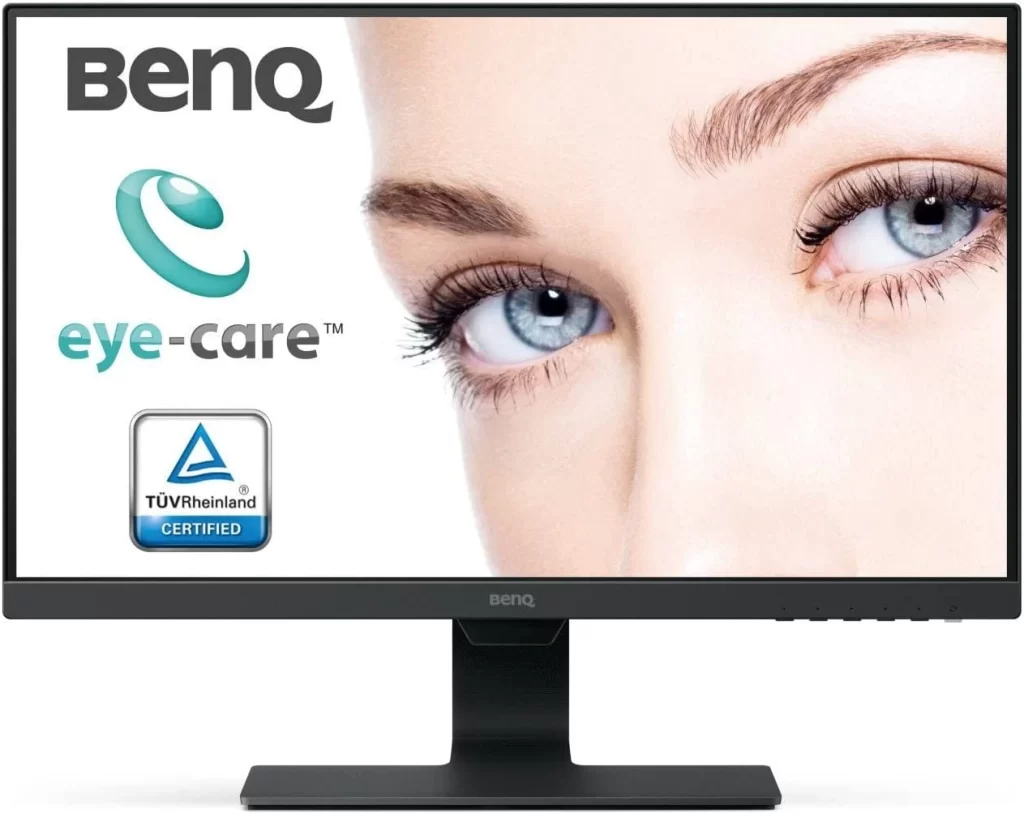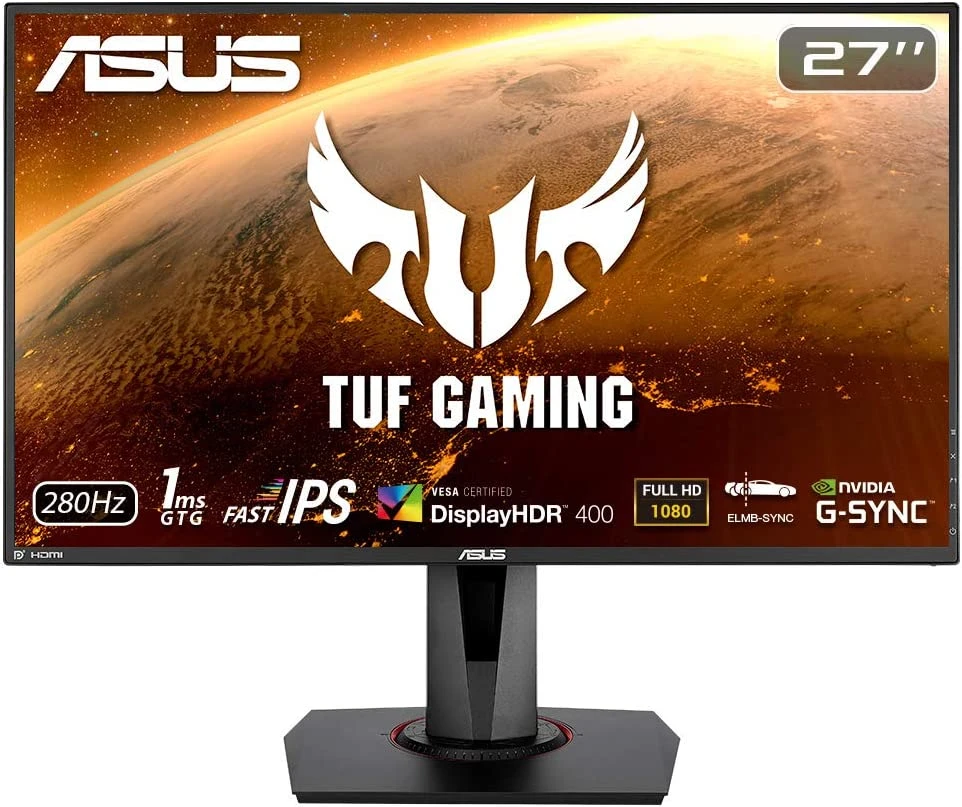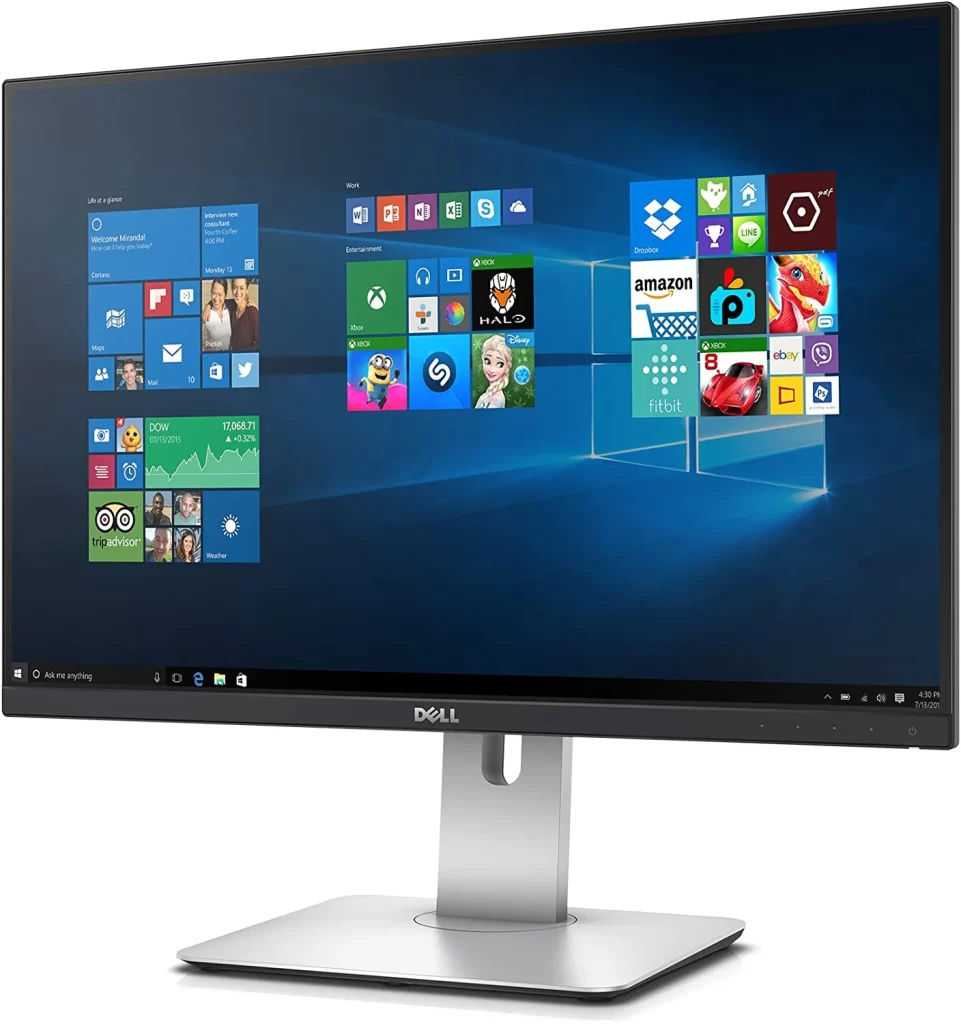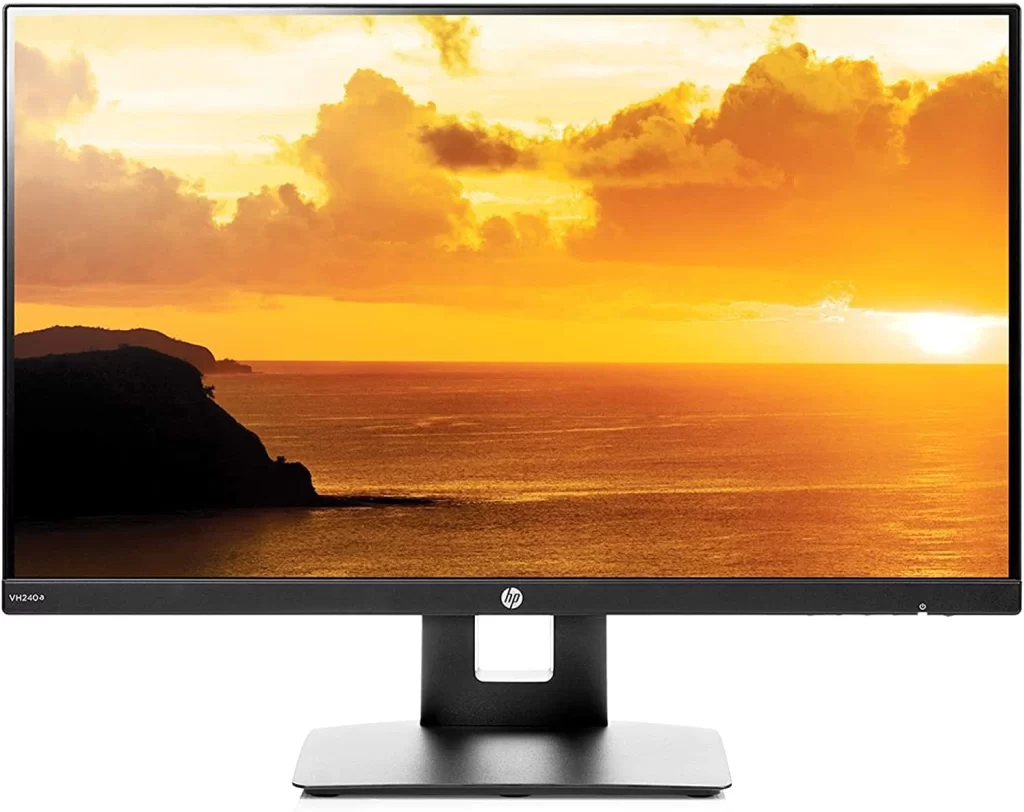Are you one of the many people who suffer from migraines? If so, you know just how debilitating they can be. One of the things that can trigger a migraine is staring at a computer screen for too long.
That’s why it’s important to find the best monitor for migraine sufferers. Not only can the right monitor help reduce the likelihood of getting a migraine, but it can also make your work or gaming experience much more enjoyable.
So, let’s take a look at some of the top monitors on the market designed with migraine sufferers in mind.
At a Glance:
- best monitor for migraine sufferers
- 1. BenQ GW2780 Eye Care Monitor
- 2. ASUS TUF Gaming VG279QM HDR Gaming Monitors
- 3. ViewSonic VP2468 Professional Monitor
- 4. Dell UltraSharp U2415 Anti-Glare Monitor
- 5. Acer R240HY bi-dx 23.8-Inch IPS HDMI DVI VGA Widescreen Monitor
- 6. HP VH240a 23.8-Inch Full HD 1080p IPS LED Monitor
- Buying Guide: How to Choose monitor for Migraine Sufferers
- Frequently Asked Questions
- Conclusion
best monitor for migraine sufferers
| Design | Best Monitor | Retailer |
|---|---|---|
Best Pick  | Check Price | |
 | Check Price | |
Staff Pick  | Check Price | |
 | Check Price | |
Budget Pick  | Check Price | |
 | Check Price |
1. BenQ GW2780 Eye Care Monitor
Best Pick
| Specification | Detail |
| Resolution | 1920 x 1080 |
| Panel Type | IPS |
| Screen Size | 27 inches |
| Viewing Angle | 178 degrees |
| Brightness | 250 cd/m² |
| Refresh Rate | 60Hz |
As someone who often suffers from migraines, I was looking for a monitor that could help reduce the likelihood of triggering one.
That’s when I stumbled upon the BenQ GW2780 Eye Care Monitor, designed with features that make it ideal for those suffering from migraines.
First, this monitor’s 1920 x 1080 Full HD display is simply stunning. Whether working, watching movies, or gaming, the image quality is always crystal clear and vibrant.
The wide viewing angle IPS panel also ensures that I can see the screen clearly from any viewpoint without any distortion or color shift.
This monitor’s edge-to-edge slim bezel design is another great feature that I love. It minimizes distractions and creates virtually seamless multi-panel configurations.
This is especially helpful when I’m working on multiple projects at once or when I’m gaming on a dual-monitor setup.
One of the standout features of the BenQ GW2780 Eye Care Monitor is its Brightness Intelligence technology.
This actively adjusts the brightness according to on-screen content and ambient light conditions, which helps reduce eye strain and fatigue. This is particularly helpful when working in low-light environments or during extended periods of use.
Finally, the cable management system of this monitor is also a great feature that I appreciate. It neatly hides cables inside the monitor stand, which helps keep my desk clean and clutter-free.
Pros
- Full HD display with stunning image quality
- Wide viewing angle IPS panel for clarity from any viewpoint
- Edge-to-edge slim bezel design for seamless multi-panel configurations
- Brightness Intelligence technology for reduced eye strain and fatigue
- Cable management system for a clean and clutter-free desk
Cons
- The refresh rate of 60Hz may not be suitable for high-end gaming
- No built-in speakers
2. ASUS TUF Gaming VG279QM HDR Gaming Monitors

| Specification | Detail |
| Resolution | 1920 x 1080 |
| Panel Type | Fast IPS |
| Screen Size | 27 inches |
| Refresh Rate | 280Hz |
| Response Time | 1ms (GTG) |
| HDR | DisplayHDR 400 |
As a frequent gamer who also suffers from migraines, finding the right monitor can be a challenge. That’s why I was excited to try out the ASUS TUF Gaming VG279QM HDR Gaming Monitor, designed with features that make it a great choice for gaming and migraine sufferers.
One of the standout features of this monitor is its ultrafast 280Hz refresh rate, designed to deliver a seamless, tear-free gaming experience.
The ASUS FastIPS technology also enables a 1ms response time, which ensures sharp gaming visuals with high frame rates. This means I can play games without worrying about motion blur or ghosting that can trigger a migraine.
The ASUS Extreme Low Motion Blur Sync (ELMB SYNC) technology is another great feature that helps eliminate ghosting and tearing for sharp gaming visuals.
It works in tandem with the G-SYNC Compatible technology to ensure that the gameplay is smooth and immersive. This feature is particularly helpful for games that require fast reflexes and precision, such as first-person shooters.
This monitor’s High Dynamic Range (HDR) technology is also impressive, delivering contrast and color performance that meets the DisplayHDR 400 certification.
This means the monitor can display a wider range of colors and brightness levels, making the gaming experience more immersive and enjoyable.
One thing to keep in mind is that you’ll need to download the drivers for your operating system to ensure that the monitor runs properly. This is a minor inconvenience, but it’s worth keeping in mind.
Pros
- Ultrafast 280Hz refresh rate for seamless, tear-free gaming
- Fast IPS technology for sharp gaming visuals with high frame rates
- ELMB SYNC technology for eliminating ghosting and tearing
- HDR technology for the immersive and enjoyable gaming experience
- Variable refresh rate (VRR) enabled by default
- Professional color gamut with DisplayHDR 400 certification
Cons
- The resolution is only 1920 x 1080, which may not be sufficient for some users
- No built-in speakers
3. ViewSonic VP2468 Professional Monitor
Staff Pick
| Specification | Detail |
| Resolution | Full HD (1920x1080p) |
| Refresh Rate | 60Hz |
| Panel Type | IPS |
| Color Accuracy | sRGB, EBU, SMPTE-C, Rec. 709, DICOM-SIM |
| Connectivity | HDMI 1.4, USB, DisplayPort, Mini DisplayPort |
| Included in the Box | Power Cable, Mini DP to DP Cable, USB 3.0 Cable, Factory Color Calibration Report |
The ViewSonic VP2468 is a premium monitor perfect for professionals who need a display that can deliver precise and lifelike colors.
With a Full HD resolution and an IPS panel, this monitor is perfect for office use, graphic design, photography, and more.
One of the standout features of the VP2468 is its amazing color accuracy. The monitor supports various color spaces, including sRGB, EBU, SMPTE-C, Rec. 709, and DICOM-SIM.
It also boasts Delta E<2 accuracies, and a smooth palette of 4.39 trillion colors, which means you’ll get precise and lifelike images every time you use it.
Another great feature of the VP2468 is its hardware calibration. This allows you to quickly and easily calibrate the monitor so that the colors displayed on the screen perfectly match the original file. This is especially important for professionals who need their work to look its best.
The VP2468 also boasts a four-sided ultra-thin bezel, which shows off more of your work and less of the monitor. This is perfect for multi-monitor setups, allowing you to create a virtually seamless display.
Regarding connectivity, the VP2468 supports laptops, P.C.s, and Apple/Mac operating systems with HDMI 1.4, USB, DisplayPort (DaisyChain enabled), and Mini DisplayPort inputs. This means you can easily connect it to your device and get started immediately.
Pros
- Excellent color accuracy
- Hardware calibration for precise color matching
- Ultra-thin bezel for a seamless display
- Multiple connectivity options for easy setup
Cons
- Limited to a 60Hz refresh rate
- No built-in speakers
4. Dell UltraSharp U2415 Anti-Glare Monitor

| Specifications | Details |
| Size | 24 inches |
| Resolution | 1920×1200 |
| Aspect Ratio | 16:10 |
| Contrast Ratio | 1000:1 |
| Response Time | 6ms |
| Viewing Angle | 178/178 degrees |
As someone who suffers from migraines, finding a monitor that doesn’t trigger them is my top priority. That’s why I decided to give the Dell UltraSharp U2415 Anti-Glare Monitor a try.
First off, the monitor’s 24-inch size is perfect for my needs. It’s not too big that it takes up too much space on my desk, but it’s also not too small that I need help seeing what’s on the screen.
The resolution of 1920×1200 and 16:10 aspect ratio provide crisp and clear visuals that are easy on the eyes. The monitor also has a 1000:1 contrast ratio and 16.78 million colors, contributing to the images’ sharpness and vibrancy.
One of the best features of this monitor for migraine sufferers is its anti-glare display. I can work for hours without experiencing eye strain, and the screen doesn’t reflect light in a way that causes headaches. The viewing angle of 178/178 degrees also ensures that I can comfortably view the screen from any position.
The Dell UltraSharp U2415 Anti-Glare Monitor also has enhanced power management with PowerNap. This feature allows the Dell Display Manager to dim the monitor to the minimum brightness level or put it into sleep mode when it’s not in use. This not only saves energy but also helps prevent eye strain and headaches.
The monitor has a height-adjustable stand that can be tilted, pivoted, and swiveled for maximum comfort. The built-in cable management also helps keep my workspace neat.
Regarding connectivity, the monitor has HDMI, Mini DP, D.P., Audio line out, and USB 3.0 with USB 3.0 Upstream Port. This provides me with ample options for connecting my devices.
Pros
- Anti-glare display that is easy on the eyes
- Enhanced power management with PowerNap feature
- Height-adjustable stand with built-in cable management
- Multiple connectivity options
Cons
- 60Hz refresh rate may not be suitable for gamers
- Some users may find the 16:10 aspect ratio unusual
5. Acer R240HY bi-dx 23.8-Inch IPS HDMI DVI VGA Widescreen Monitor
Budget Pick
| Specifications | Details |
| Size | 23.8 inches |
| Resolution | 1920×1080 |
| Aspect Ratio | 16:9 |
| Panel Type | IPS |
| Response Time | 4ms |
| Viewing Angle | 178/178 degrees |
As someone who spends long hours in front of a computer screen, finding a monitor that doesn’t cause eye strain or headaches is essential. That’s why I decided to try out the Acer R240HY bids 23.8-Inch IPS HDMI DVI VGA Widescreen Monitor.
First off, the monitor’s 23.8-inch size is perfect for my needs. It’s not too big that it takes up too much space on my desk, but it’s also not too small that I need help seeing what’s on the screen.
The resolution of 1920×1080 and 16:9 aspect ratio provide clear and vivid visuals that are easy on the eyes. The IPS panel also ensures that colors are accurate and consistent from any angle, which is great for those who need to collaborate on projects.
One of the best features of this monitor for migraine sufferers is its anti-glare display. The screen has a matte finish that reduces glare and reflections, making it easier to work for extended periods without straining your eyes.
The viewing angle of 178/178 degrees also ensures that the screen can be viewed comfortably from any position.
The monitor has a quick response time of 4ms, which is great for gamers or anyone who needs a monitor with fast refresh rates. It also has built-in HDMI, DVI, and VGA ports, which provide ample connectivity options for various devices.
The Acer R240HY bids 23.8-Inch IPS HDMI DVI VGA Widescreen Monitor is also energy-efficient. It has a power-saving mode that reduces energy consumption when the monitor is not in use, which is not only eco-friendly but also helps reduce electricity bills.
Pros
- Anti-glare display that is easy on the eyes
- Quick response time of 4ms
- Built-in HDMI, DVI, and VGA ports
Cons
- 60Hz refresh rate may not be suitable for gamers
- Some users may find the 16:10 aspect ratio unusual
6. HP VH240a 23.8-Inch Full HD 1080p IPS LED Monitor

| Specifications | Details |
| Size | 23.8 inches |
| Resolution | 1920×1080 |
| Panel Type | IPS |
| Contrast Ratio | 1000:1 |
| Response Time | 5ms with overdrive |
| Viewing Angle | 178/178 degrees |
As someone who works from home and spends a lot of time in front of a computer screen, I need a monitor that is easy on the eyes. The HP VH240a 23.8-Inch Full HD 1080p IPS LED Monitor caught my eye due to its anti-glare, matte LED-backlit panel.
The anti-glare coating reduces eye strain and prevents headaches, which is great for migraine sufferers like me.
The 23.8-inch full H.D. monitor has a resolution of 1920x1080p @ 60 Hz and an aspect ratio of 16:9. The IPS panel type ensures accurate color reproduction and wide viewing angles of 178/178 degrees. The contrast ratio of 1000:1 also contributes to the vibrancy of the images.
The response time of 5ms with overdrive ensures that the picture looks crisp and fluid without motion blur. While this may need to be faster for serious gamers, it is good enough for everyday use.
The HP VH240a 23.8-Inch Full HD Monitor also has built-in speakers, which provide great sound quality for your content. The integrated audio speakers are convenient and save space on your desk.
One of the features I love about this monitor is the VESA mounting option. It has a 100m VESA mounting pattern, so you can easily mount the display on walls or brackets. This gives you plenty of options for mounting your monitor on whatever wall or desk suits your fancy.
The monitor is also meticulously engineered, with 90° rotation for horizontal (landscape) and vertical (portrait) viewing modes. It also has an adjustable height and tilt (-5° to 30°) and 178° positional viewing for the best quality at any angle.
Pros
- Anti-glare, matte IPS LED-backlit panel for reduced eye strain
- Built-in speakers
- VESA mounting option
- Meticulously engineered for maximum viewing flexibility
Cons
- Response time may not be fast enough for serious gamers
Buying Guide: How to Choose monitor for Migraine Sufferers
Migraine sufferers are often sensitive to bright lights and flickering screens, making it crucial for them to choose the right monitor.
With so many options available, finding the best monitor for migraine sufferers can be overwhelming. But worry not; we’re here to guide you through the process.
Here are some points to consider when choosing the best monitor for migraine sufferers:
- Screen Technology – Look for monitors that use LED backlighting, as these tend to cause less flicker and glare. Avoid monitors that use PWM (Pulse Width Modulation) dimming, which can cause eye strain and headaches.
- Screen Size and Resolution – Choose a screen size and resolution that suits your needs. Larger screens may cause more eye strain, so it’s important to find a balance between size and comfort.
- Anti-Glare Coating – Choose a monitor with an anti-glare coating to reduce reflections and glare, which can cause eye strain and headaches.
- Blue Light Filtering – Monitors that offer blue light filtering can reduce eye strain and headaches. Look for monitors that offer blue light filtering technology, which can reduce the amount of blue light emitted by the screen.
- Adjustable Settings – Look for monitors that allow you to adjust the brightness, contrast, and color temperature to suit your needs. Some monitors also offer settings that reduce flicker and eye strain.
- Ergonomics – Choose a monitor with an adjustable stand or mount, allowing you to adjust the height, tilt, and angle of the screen to reduce strain on your neck and eyes.
Based on these points, we recommend the HP VH240a 23.8-Inch Full HD 1080p IPS LED Monitor as the best option for migraine sufferers. Its anti-glare, matte IPS LED-backlit panel and blue light filtering technology reduce eye strain and headaches.
The monitor also offers adjustable settings, including height, tilt, and angle, and an adjustable stand for added comfort.
Frequently Asked Questions
What is an anti-glare coating on a monitor, and how does it help with migraines?
An anti-glare coating is a thin layer applied to the monitor screen that reduces the amount of reflected light, making the display easier to view in bright environments. This reduces eye strain and can help prevent migraines caused by exposure to bright light.
What is the ideal brightness level for a monitor to avoid triggering migraines?
The ideal brightness level for a monitor is typically around 120 cd/m². Anything brighter than this can cause eye strain and increase the risk of triggering migraines.
How does the refresh rate of a monitor impact migraines?
A higher refresh rate can help reduce eye strain and prevent migraines caused by flickering and screen tearing. A refresh rate of at least 60Hz is recommended for most users.
What is a blue light filter on a monitor, and how does it help with migraines?
A blue light filter is a feature that reduces the amount of blue light emitted by the monitor screen. Blue light can cause eye strain and disrupt sleep patterns, triggering migraines in some people. By reducing blue light emissions, a monitor can help prevent these triggers.
Are any specific monitor brands or models recommended for migraine sufferers?
Several brands and models of monitors are recommended for migraine sufferers, such as the Dell UltraSharp U2415 Anti-Glare Monitor and the HP VH240a 23.8-Inch Full HD 1080p IPS LED Monitor. These monitors have anti-glare coatings, blue light filters, and adjustable brightness levels that can help prevent migraines.
Conclusion
In conclusion, finding the best monitor for migraine sufferers can make a significant difference in reducing the occurrence and severity of migraines. Consider factors such as resolution, size, brightness, flicker-free technology, and anti-glare coating when looking for a monitor.
It’s important to remember that each person’s needs are unique, so what works for one person may not work for another.
By taking the time to do research and find a monitor that meets your individual needs, you can make a positive impact on your overall health and well-being.


